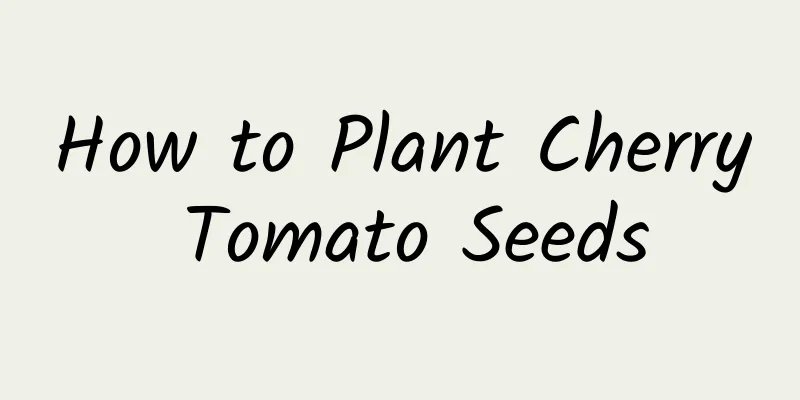High-yield planting technology of loofah

|
Loofah is a nutritious vegetable that is rich in vitamins and minerals. Its meat is smooth and has a delicate taste, making it a very popular ingredient on our daily dining tables. In the market, loofah is also loved and favored by many consumers. Let’s learn about the high-yield cultivation technology of loofah. 1. Sow seeds at the right time A farmer's proverb says: "The snow stops in Qingming and the frost stops in Grain Rain", and "Plant melons and beans around the time of Grain Rain". In many areas of our country, the average temperature during the Grain Rain festival remains stable at above 15℃, and Grain Rain means the end of the "last frost". Therefore, the period from Grain Rain to Beginning of Summer is the suitable sowing period for open-air loofah. Do not sow seeds blindly in advance. 2. Select strong seedlings and plant them sparsely Luffa can be raised and transplanted, or it can be sown directly, with direct seeding usually being the preferred method. When sowing, place 3 to 4 seeds in each hole (to speed up germination, soak the seeds for 3 hours in advance before sowing), and cover with 2 to 3 centimeters of soil. After the seedlings emerge from the soil, select 1 to 2 strong seedlings. Robust seedlings have strong resistance to adversity, which is conducive to high yield of loofah. The loofah plant is tall and covers a wide area when mature. When planting, dig a planting hole every 1 meter. Over-dense planting will lead to field congestion, high incidence of pests and diseases, and flower shedding, thus reducing yields. Special note: Loofah and bitter gourd should not be mixed, otherwise the loofah will become bitter. 3. Reasonable watering As the saying goes: "The growth of loofah before the harvest depends on drought, while the growth of loofah after the harvest depends on water." This means that before the loofahs bear fruit, you can water less or not at all; after the fruit bears fruit, you need to increase the amount of watering to promote high yield. When sowing, if the soil is moist, no watering is required; if it is dry, watering is required. The seedling stage requires less water. Excessive watering can easily lead to vigorous growth of the plant, which is not conducive to root growth. Therefore, water less during the seedling stage and avoid flooding. After the fruits are formed, the soil moisture needs to be kept at no less than 70%. You can water the fruits frequently with small amounts of water, which is conducive to more fruits and faster growth. 4. Scientific fertilization Luffa is a fertilizer-loving crop. As the saying goes, "It is better to fertilize a large area with dots and lines than to fertilize a large area." When planting loofah, it is best to apply the base fertilizer in holes. Put an appropriate amount of decomposed farmyard manure and a small amount of triple compound fertilizer in each planting hole. During the seedling stage, you can sprinkle 2 to 3 times with decomposed thin manure water or apply a small amount of urea to promote the healthy growth of the seedlings. As the loofah seedlings grow, the concentration of manure water can be increased appropriately. Luffa has a high demand for nutrients during the flowering and pod-setting period, and heavy topdressing should be applied during the initial flowering period. Apply 30 kg of triple compound fertilizer per mu, and spray 0.3% potassium dihydrogen phosphate foliar fertilizer once every 10 days, and spray 2 to 3 times in a row to prevent premature aging of the plants and significantly increase yield. After that, it is best to apply decomposed manure water every time the loofah is harvested, and try to apply fertilizer after each crop. 5. Pruning and guiding vines During the growth process of loofah, many side vines will grow. Only 2 to 3 strong side vines need to be retained, and the excess vines should be cut off to save nutrients, which is conducive to more flowering and more melons. When pruning, also cut off the old, diseased and yellow leaves at the bottom of the plant to enhance ventilation and light transmission in the field and reduce diseases and pests. For plants with vigorous growth, "topping and pinching" can be carried out to inhibit vegetative growth, promote reproductive growth, and help increase the yield of loofah. Luffa is a plant with strong climbing ability. When the vine grows to 30 cm high, bamboo can be inserted to guide the vine. When guiding the vines, do it counterclockwise and the height of the trellis should not be less than 2 meters. The above is an introduction to the key points of high-yield cultivation techniques of loofah. As a vegetable variety with good market prospects, loofah is grown by quite a lot of people, but if you want high quality and high yield, you must master comprehensive cultivation techniques.
|
<<: The best time to graft ginkgo, what tree is best to graft ginkgo
>>: Ginkgo branch propagation technology, how does the ginkgo tree propagate
Recommend
How to care for Strelitzia reginae in summer
Strelitzia reginae summer light requirements Comb...
Lettuce planting time and method
Lettuce is a common vegetable in our lives. Its s...
Sunflower flowering period, when is the sunflower season
1. Sunflower flowering period Sunflowers are usua...
Throw the walnut into water, it will grow branches and leaves in 15 days and become a potted plant in 30 days. It will look beautiful when you keep it at home!
Especially walnuts. People often say that eating ...
How to protect outdoor flowers from cold
Protecting ground flowers from the cold: Covering...
How to Successfully Propagate Flowers from Cuttings
Pay attention to moisturizing when taking cutting...
How to grow a 10-meter-long green radish and asparagus fern?
10-meter-long asparagus fern While you are still ...
Does strawberry like water? Is it a water-loving plant?
Do strawberries like water? Strawberry likes wate...
Breeding methods and precautions of colorful red star
1. Maintenance methods 1. Soil: The colorful red ...
Do flowers have the same temperature requirements at different growth stages?
Temperature requirements for flowers in the seedl...
Can the cage of Nepenthes be filled with water? How to grow the cage?
1. Whether water can be irrigated When caring for...
Can aloe vera be eaten directly? Can children eat it?
1. Can I eat it directly? If nothing is processed...
When is the right time to sow carrots?
The right time to sow carrots Carrots belong to t...
What are the benefits and effects of brown sugar water for watering flowers? What flowers can be watered?
Benefits of brown sugar water for watering flower...
How to grow Christmas cactus? Can Christmas cactus be grown hydroponically?
1. How to grow Christmas cactus 1. Soil: When car...









